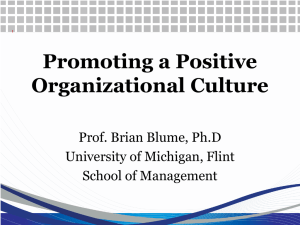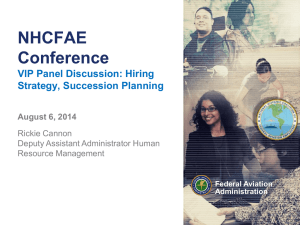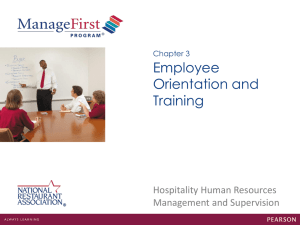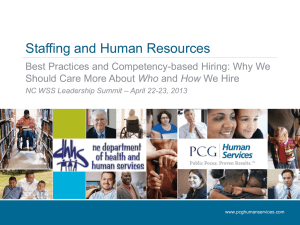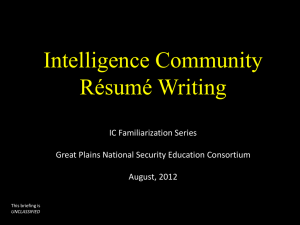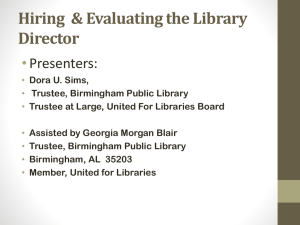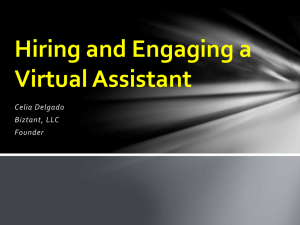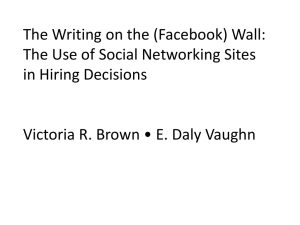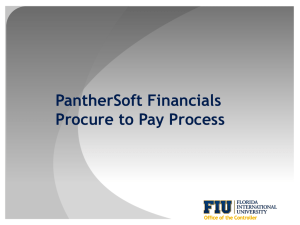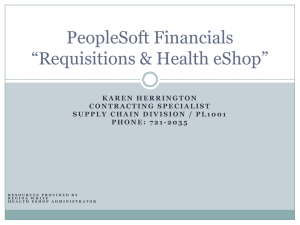Hiring Process Redesign
advertisement
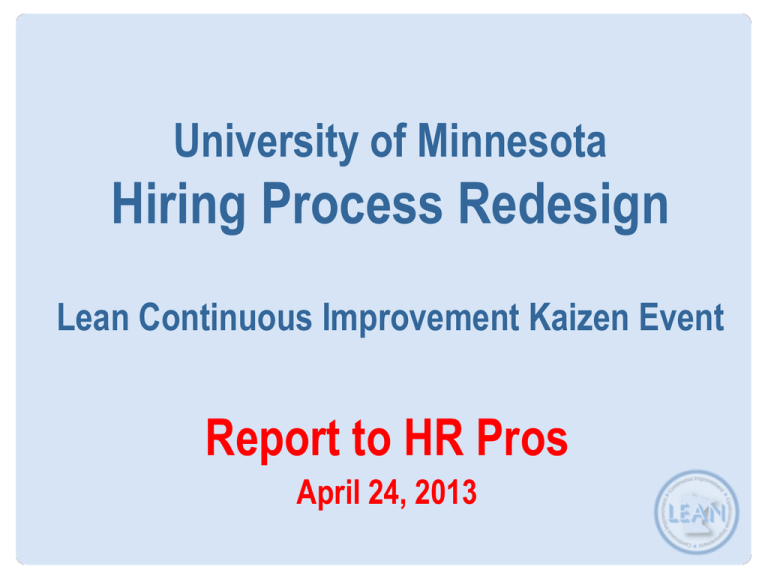
University of Minnesota Hiring Process Redesign Lean Continuous Improvement Kaizen Event Report to HR Pros April 24, 2013 Kaizen Team Kaizen Team • Sponsor – Lori Lamb • Team Leader – Katie Stuckert & Laura Negrini • Team members: • • • • • • • • • • • Sheila Reger, Consulting Team Manager Alexandra Whittington, HR Consultant Jackie Gilliard, Staffing Consultant Charlene Lowe, Talent Coach, OHR Job Center Bonnie Marten, Diversity & Inclusion Committee Rep Dorothy Cottrell, Academic Health Center Lori Loberg, College of Food, Agriculture and Nat Res Science Linda Kinnear, UMN Duluth Mary Cameron, UMN Duluth Lynne Olson, University Services Michele Gross, University Policy Office • Facilitator – Tom Baumann, Sara Gronewold Business issue Perceived challenges with the hiring process include: • Inefficient and cumbersome process results in high time-tofill rates •Varied processes among different employee groups (ie. Faculty, P&A, Civil Service, and Labor Represented) •Poor candidate experience given the application review and priority hiring requirements •Unclear and inconsistent standards regarding posting requirements •Lack of communication throughout the process between OHR and the units as well as with the candidates Scope of Kaizen Event Scope: Review of the central hiring processes --beginning when the requisition is received (post-classification) from the collegiate or administrative unit until the requisition is designated as either filled or canceled. The process will include faculty, P&A, Civil Service, Labor Represented, and No-Search hires. The project does not include student hires. Starting point: Requisition is received from the collegiate or administrative unit End point: When the requisition is designated as filled or canceled. Goals For the Future Process • Simplify the hiring process by eliminating steps that no longer add value or are not required by policy or collective bargaining agreements • Reduce number of process steps by 50% • Define roles and responsibilities between OHR and unit representatives • Decrease time-to-fill rate by 30% Current Process Observations of Current Process • • • • • • • • Processes are complex and not standardized Training for hiring authorities is inadequate Hiring process is frustrating for users and applicants Inconsistency between units on how to close out requisitions EOAA guidelines are inconsistently applied Failure rate percentages are high – lots of rework on requisitions Surprised at variety of duties for hiring authorities Communication with the candidates is not timely and is incomplete Observations of current process • Lots of “hurry up and waits” • Too much information in too many places • Information is sometimes not easily or intuitively accessible • We try to be high service but process is confusing for users • Disappointed that there isn’t more automation within the process Faculty/P&A Current state Qty Time Tasks 49 56 hours, 40 minutes Waits 44 114 days Handoffs 18 Decisions File/store Elapsed Time 6 7 121 days Future state Qty Time Civil Service/Labor Represented (with valid priority candidates) Current state Qty Time Tasks 30 16 hrs, 45 mn Waits 20 32 days Handoffs Decisions File/store Elapsed Time 14 5 3 33 days Future state Qty Time Civil Service/Labor Represented (no priority candidates) Current state Qty Time Tasks 40 35 hours, 45 minutes Waits 32 65 days Handoffs 24 Decisions File/store Elapsed Time 9 8 70 days Future state Qty Time Recommendations Issue: Hiring process takes too long and is inconsistent across campuses, units, and employee groups Actions: Reduce number of steps and standardize process; clarify roles and responsibilities; establish timeline expectations, include checklists, and distribute updated flowchart Recommendations Issue: Within the process of no-search hires for faculty and P&A positions, there is tension between the values of the organization and the flexibility needed to attract, promote, and retain high quality and diverse candidates. Action: Strengthen the approval criteria and recommend delegation of authority at campus level Recommendations Issue: 80% of requisitions are submitted with incomplete information, which increases time-to-fill. Action: Improve usability of requisition form with additional automation and instructions; and provide education and performance metrics to HR and hiring authorities Recommendations Issue: Data integrity is unreliable due to lack of timely and accurate updates of information within system Action: Clarify procedures and expectations and communicate the negative impact of delays Recommendations Issue: Hiring process does not prioritize candidate experience. Action: Simplify candidate application process and increase automated communication with candidate throughout process Future Process Faculty/P&A Current state Future state Qty Time Qty Time Tasks 49 56 hours, 40 minutes 28 22 hrs, 40 min Waits 44 114 days 13 55 days Handoffs 18 12 Decisions File/store Elapsed Time 6 5 7 4 124 121 days 63 59 days Civil Service/Labor Represented Current state Future state Qty Time Qty Time Tasks 40 35 hours, 45 minutes 21 19 hrs, 45 mn Waits 32 65 days 9 25 days Handoffs 24 15 Decisions File/store Elapsed Time 9 6 8 5 113 70 days 56 28 days Civil Service/Labor Represented (w/valid priority candidates) Current state Future state Qty Time Qty Time Tasks 30 16 hrs, 45 mn 18 8hrs, 20 mn Waits 20 31 days 8 18 days Handoffs Decisions File/store Elapsed Time 15 8 5 3 3 73 33 days 37 20 days Efficiency Opportunities P & A and Faculty Reduction of process steps Reduction in elapsed time Reduction in task time Civil service/labor represented (no PC) Reduction of process steps Reduction in elapsed time Reduction in task time Civil service/labor represented (PC) Reduction of process steps Reduction in elapsed time Reduction in task time 50% 49% 58% 50% 65% 49% 56% 40% 50% Anticipated Improvement Metrics • • • • Reduced time-to-fill 80% first-pass-yield on requisitions Improved hiring authority satisfaction Hiring authorities are aware of EOAA goals for all vacancies • Reduce the number of direct-hires (except spousal) • Increased accuracy of applicant statuses • Reduced staff time to meet reporting requirements by 20% Benefits of Future State • University’s reputation is improved • Able to attract, acquire, and retain diverse and high-quality candidates • Reduce administrative costs • Redirect staff resources to more strategic and mission-related functions • Hiring authorities have resources and support they need to navigate the hiring process effectively • Increases accountability • Decreased frustration by everyone in process Action Plan What When Create guidelines for hiring decisions that need consultation (added to tool kit) June 1, 2013 Linda Update and improve requisition form (Add hard stops where appropriate, add language to manage expectations) July 1, 2013 Laura Educate HR pros about incoming requisition bottleneck to better manage process May 1, 2013 Sheila Create training and guidelines (checklists) for hiring authorities (added to tool kit) on new process August 1, 2013 Laura Define responsibility and reduce and control number of hiring authorities that can enter requisitions June 1, 2013 Laura/Susan July 1,2013 Mary/Patti D. May 15, 2013 Sept. 6, 2013 Katie July 1, 2013 Laura/Katie Create standards for managing layoff list Executive leaders communicate plan to empower Human Resources/Staffing Consultants Create flowcharts for each employee group with steps and timeframes i.e 6 weeks for P&A/14 days for CS &LR include in training and tool kit Who Action Plan What When Who Monitor incoming reqs. for completeness and accuracy June 1, 2013 Jackie Research and explore opportunities for shared services Sept. 1,2013 Sheila/Laura Establish diversity screening standards to hiring authorities (for tool kit) July 1, 2013 Mary/Linda Lori Develop direct hire form language and template June 1, 2013 Katie Identify and implement Best Practices for interview scheduling (for tool kit) July 1, 2013 Katie Review and revise “so sorry” letters – expand to academics hiring procedure. Align system notifications with applicant status (tool kit) July 1, 2013 Katie Develop and improve recruiting efforts – active outreach (runner ups, internal talent bank, mobility) Sept. 1, 2013 Charlene Training around effective reference checking (tool kit) July 1, 2013 Sheila Action Plan What When Establish and execute an Hiring Authority satisfaction July 1, 2013 survey Propose delegation authority of direct hire to the chancellors June 1, 2013 Update policies and procedures to implement new process August 1, 2013 Who Laura/OMS Katie Michele Needed to Fully Capture and Sustain These Improvements • We need the approval, public support for, and broad communication by the Senior Leadership Group • Despite the high priority of ESUP, we need human and technical resources for updating employment system • We need ongoing measurement and feedback of process performance Helpful Hints to improve Requisition first pass yield • Complete ALL the fields. May need to change to Requisition Approver role to have access to edit fields. • Always complete the field specifying if a background check is required. Guidelines for whether a background check is recommended are located in Managers Toolkit. • Minimum requirements must be consistent with the job classification. Always compare the job classification database info with the minimum requirements in the posting for consistency. • Minimum requirements must be specific and measurable. • For represented labor groups: preferred requirements beyond the minimum cannot exceed the minimum requirements. Helpful Hints to improve Requisition first pass yield • Remove all fancy formatting. • When duplicating a previous requisition, check every field carefully for relevance and accuracy. Look for old dates embedded within posting description or application instructions. • Always add notes to provide context. Notes such as previous discussions and decisions, who participated, why a req should or should not be posted until filled, if an internal candidate has been identified, justification for not conducting a background screen, etc. • Common mistake: considering students to be “internal”, students are “external”. Questions/Observations?
